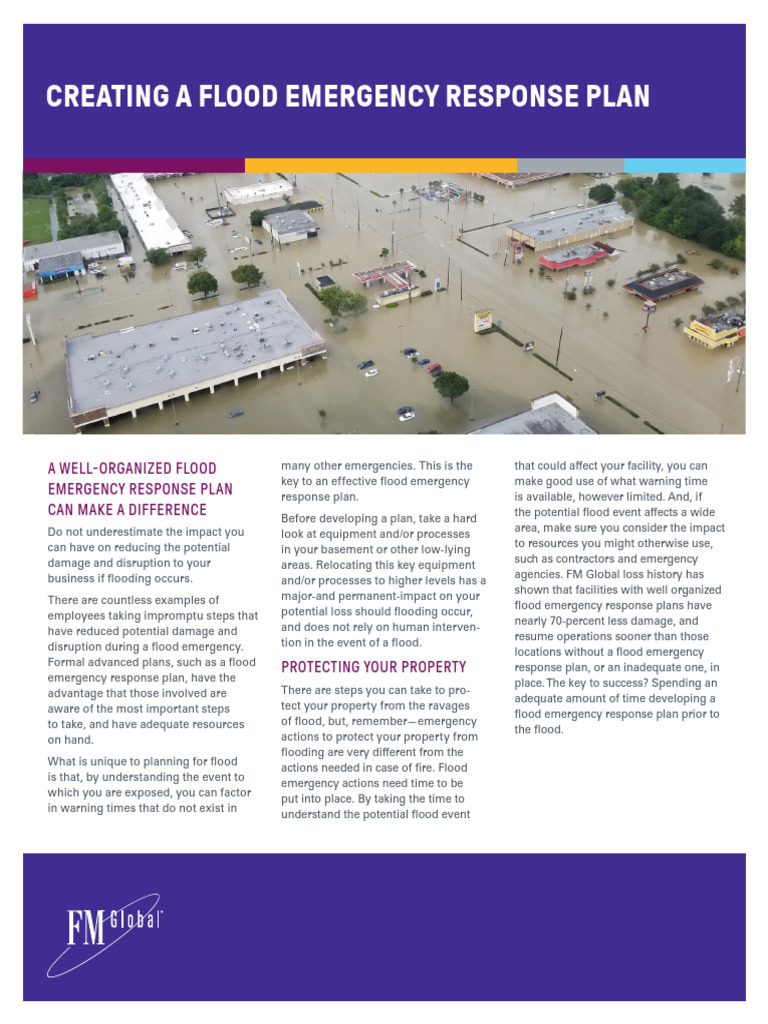What Is A Flash Flood Emergency? Preparedness And Response Strategies

Table of Contents
Understanding Flash Flood Emergencies
Defining Flash Floods
Flash floods are characterized by their rapid onset and short duration. They are typically caused by intense rainfall over a short period, often associated with thunderstorms, hurricanes, or rapid snowmelt. Unlike regular floods, which develop gradually over time, flash floods can transform normally dry creek beds, arroyos, and urban streets into raging rivers within minutes. Common causes include intense thunderstorms, dam failures, and the rapid melting of snowpack in mountainous areas. The speed and force of the water are the key dangers of a flash flood, making them particularly hazardous. The sheer volume of water moving rapidly can cause significant property damage and loss of life.
Identifying Risk Factors
Certain areas are more prone to flash flooding than others. Mountainous regions, canyons, and dry washes are particularly vulnerable due to their steep slopes and limited drainage capacity. Urban areas with inadequate drainage systems, paved surfaces, and limited green spaces also face a heightened risk. Urbanization exacerbates the risk because paved surfaces prevent water absorption into the ground, increasing surface runoff and accelerating the speed of floodwaters. Understanding your local geography and recognizing areas prone to flash flooding are vital steps in flash flood preparedness.
- Flash floods can occur with little or no warning.
- Even small streams and normally dry areas can become deadly flash flood channels.
- Flash floods are a leading cause of weather-related deaths in many countries.
- Rising water can quickly engulf vehicles and buildings.
Preparedness Strategies for Flash Flood Emergencies
Developing a Family Emergency Plan
Having a well-defined family emergency plan is crucial for flash flood preparedness. This plan should include:
- Communication Plan: Establish primary and secondary contact points for family members to check in with each other during and after a flash flood.
- Designated Meeting Points: Identify safe meeting points both inside and outside your home in case of evacuation.
- Evacuation Routes: Plan multiple evacuation routes and be familiar with local emergency shelters.
- Pet Preparedness: Include plans for your pets in the event of a flash flood.
Creating a Go-Bag
A well-stocked "go-bag" containing essential supplies is vital for flash flood emergencies. Your kit should include:
- Water (at least one gallon per person per day for several days)
- Non-perishable food
- First-aid kit
- Medications
- Flashlight and extra batteries
- Battery-powered radio
- Important documents (copies of insurance policies, identification, etc.)
- Whistle
- Warm clothing
Monitoring Weather Forecasts
Staying informed about weather forecasts and warnings is crucial. Regularly check reliable sources like the National Weather Service (or your country's equivalent) for updates. Sign up for emergency alerts through your local authorities to receive timely warnings directly to your phone or other devices. Pay close attention to flash flood watches and warnings. A flash flood watch means conditions are favorable for flash flooding, while a flash flood warning indicates that flash flooding is occurring or is imminent.
- Sign up for emergency alerts through your local authorities.
- Know your flood risk and evacuation zone.
- Identify safe locations within your home or nearby.
- Ensure your insurance covers flood damage.
Response Strategies During a Flash Flood Emergency
Evacuation Procedures
If a flash flood warning is issued for your area, evacuate immediately. Follow the instructions of local authorities. Take your go-bag, and gather essential items. Do not attempt to drive through flooded areas. Remember, turn around, don't drown.
Seeking Shelter
If you cannot evacuate, move to higher ground immediately. If you are in a building, move to the upper floors. Avoid basements and ground floors. If you are caught outdoors, seek shelter in a sturdy structure. Never attempt to walk or drive through flowing water.
Actions to Take If Trapped
If you become trapped in a flash flood:
-
Seek high ground immediately.
-
If in a building, move to the highest level.
-
If your vehicle is submerged, attempt to escape if safe to do so; otherwise, stay in your vehicle until rescued.
-
Contact emergency services as soon as possible.
-
Never attempt to drive through flooded areas.
-
Avoid walking or hiking near streams or rivers during or after heavy rain.
-
Turn around, don’t drown.
-
Be aware of debris and downed power lines.
Post-Flash Flood Recovery and Safety
Assessing Damage
After a flash flood, carefully assess the damage to your property. Check for structural integrity before re-entering your home. Be cautious of weakened structures, downed power lines, and contaminated water.
Contacting Authorities
Report any damage to your local authorities and insurance company as soon as possible. This allows for effective disaster response and helps with insurance claims.
Cleaning and Sanitation
Clean up debris and contaminated materials carefully, avoiding direct contact with floodwater. Floodwater is often contaminated with sewage and other harmful substances. Use appropriate protective gear.
- Be cautious of contaminated water and debris.
- Report any damage to your local authorities.
- Contact your insurance company to file a claim.
- Be aware of the potential for diseases after a flood.
Conclusion
A flash flood emergency demands immediate action and preparedness. By understanding the risks, creating a comprehensive emergency plan, and knowing the appropriate response strategies, you can significantly reduce your vulnerability and protect yourself and your loved ones. Don't wait for a flash flood to strike; take action today to ensure your family's safety. Learn more about flash flood preparedness and develop your own comprehensive plan to mitigate the risk of a flash flood emergency. Remember, being prepared is your best defense against the devastating power of a flash flood.

Featured Posts
-
 Match Monaco Nice Le Groupe Des Joueurs Selectionnes
May 26, 2025
Match Monaco Nice Le Groupe Des Joueurs Selectionnes
May 26, 2025 -
 Gold Investment Soars On Trumps Latest Eu Trade Actions
May 26, 2025
Gold Investment Soars On Trumps Latest Eu Trade Actions
May 26, 2025 -
 L Impact De La Justice Sur La Carriere Politique De Marine Le Pen
May 26, 2025
L Impact De La Justice Sur La Carriere Politique De Marine Le Pen
May 26, 2025 -
 O Kuluebuen Basindaki Sorusturma 4 Oenemli Oyuncu Goezaltinda
May 26, 2025
O Kuluebuen Basindaki Sorusturma 4 Oenemli Oyuncu Goezaltinda
May 26, 2025 -
 Saint Brieuc Et La Charentaise Le Succes D Une Tradition Chaussure
May 26, 2025
Saint Brieuc Et La Charentaise Le Succes D Une Tradition Chaussure
May 26, 2025
